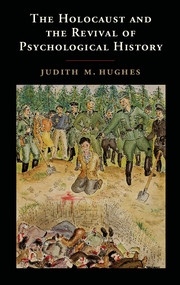3 - Willing Executioners
Published online by Cambridge University Press: 18 December 2014
Summary
Auschwitz long figured as the preeminent site of the Holocaust. It still does. But in recent years, its primacy has been challenged: instead of offering a narrative of increasing efficiency and murderousness leading to gas chambers, historians have turned to the sequence of massacres that reached a crescendo in 1942 and continued, albeit at a reduced rate, into the postwar period. At the same time, this shift underlined the need to take a hard look at face-to-face killing and the brutality that so frequently accompanied it. Three authors – and four books they produced – have grappled with the psychology of these perpetrators. Let me introduce them.
I begin with Jan T. Gross’s Neighbors: The Destruction of the Jewish Community in Jedwabne, Poland (2001), and I end with his Fear: Anti-Semitism in Poland after Auschwitz (2006). Born in 1947 in Warsaw, the son of a Polish mother, who during the German occupation risked her life to aid his Polish-Jewish father – they married only after the war – the young Gross, as a dissident university student, ran afoul of the Polish government. So serious was the offense that he was expelled, arrested, and jailed for five months. In 1969, accompanied by his parents, he emigrated to the United States and resumed his studies. He earned a doctorate in sociology from Yale in 1985 and proceeded to a series of academic posts. Neighbors went on sale when he was teaching at New York University; Fear came out after he had settled at Princeton. Along the way he became an American citizen.
- Type
- Chapter
- Information
- The Holocaust and the Revival of Psychological History , pp. 75 - 120Publisher: Cambridge University PressPrint publication year: 2014



